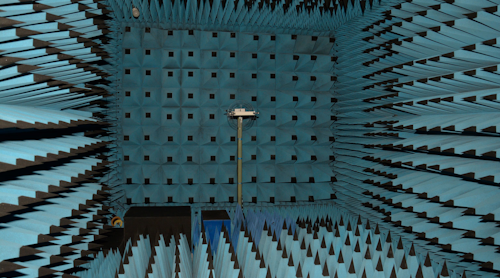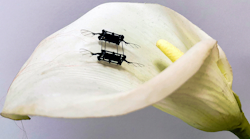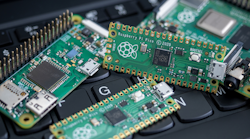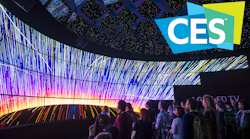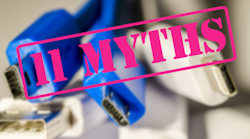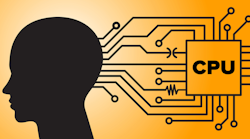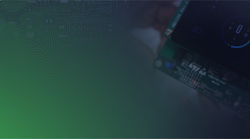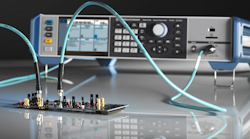Here’s one for you: How do you perform consistent and reliable behavioral response testing of a connector-less wireless “thing” in the face of great wideband and narrowband interference, from sources ranging from Wi-Fi, Bluetooth, ZigBee, and LTE-U, to microwave ovens and baby monitors?
That’s a mouthful, but think about it for few minutes: You have no coax cable connection to supply a controlled interferer, you can’t afford a huge facility to keep non-test-related interferers out, you need to be able to perform the test in minutes, not hours or days, and you need to be scalable from 2×2 to 8×8 MIMO and beyond. That’s up at least 16 tx/rx antennas you need for test, if not more.
这些问题我发现octoScope solving when I dropped by last week. Having tracked the company since Fanny Mlinarsky founded it in 2006 as a consultancy, it was exciting to see how it had evolved to offer a full two-chamber octoBox Testbed to tackle and solve the puzzle presented above.
其实验不可能出现在一个更好的时间。With the Internet of Things (IoT) about to flood our farms, factories, hospitals, cities, and homes with RF, and telecom carriers also pushing their way into the unlicensed bands with LTE-Unlicensed and License Assisted Access, the airwaves are about to get very crowded indeed.
Fanny wasn’t there when I stopped by, but Randy Oltman (formerly of Spirent and Teradyne), who recently joined as VP of marketing, gaveElectronic Designan overview of the new Platform. You can watch the video below.
He also elaborated on the challenges he sees facing wireless system designers, which basically can be summed up in two words: coexistence and adaptation. Hundreds of devices competing for space in a typical home makes for an interesting simulation problem. That’s where the octoBox testbed comes in.
The latest version of octoBox comprises two anechoic chambers that are completely isolated using layers of impedance-matched carbon-impregnated RF-absorbing foam, and tuned to the range of 600 MHz to 6 GHz. The top chamber houses the access point, while the client or “device under test” (DUT) is placed in the second chamber beneath.
It’s this almost complete isolation that allows for repeatable behavioral analysis under interference, as well as throughput performance checking, roaming behavior, interoperability, and the ability to emulate a multi-room house.
The test waveforms are supplied by the external quadAtten, which comprises four different electrically controlled attenuators that allow the tester to effectively adjust the range of the two devices to emulate motion and variable range.
Stacked on quadAtten is the iGen interference generator, which simulates narrowband interference, from baby monitors, microwave ovens, and traffic radar, for example, as well as wideband signals from ZigBee, Wi-Fi, and LTE networks.
“We can simulate Wi-Fi traffic and fully observe Wi-Fi protocols, but insert a great amount of traffic to load down the channels and see how the devices perform under channel loading, all simultaneously,” says Oltman. The iGen interference patterns can be controlled using a Web interface or API and is dynamically changing based on how it’s programmed.
The ultimate challenge octoScope is working on is to ensure hundreds of devices can coexist in an environment such as the home. Along with classic home networks, carriers are now fighting to insert LTE and LAA into unlicensed bands, bonding 20-MHz data carriers to their existing spectrum in the licensed bands.
“The big question is how they behave in the presence of Wi-Fi, and vice versa,” says Oltman. It’s early days yet, and the results are mixed. While the respective groups are working closely together, according to Oltman, “there is a wide number of devices on either side, and many of the sensing and adaptation algorithms are proprietary, so a lot of testing has to happen. So that’s something engineers need to be concerned about.”
Historically, the required tests would have been done in shielded enclosures, or even over open air, but shielded enclosures are subject to reflections, internally, while open-air tests are subject to ambient interference, which eliminates consistency. “They need to be able to create tests and have them be repeatable, which is where we come in,” says Oltman.
Of course, massive EMC houses could be built for millions of dollars of capital expenditure, but the octoBox “is portable and easily wheeled to where it needs to be,” he says, adding that “out of the box, it’s up and running in an hour.” Depending on the density of points you want to check and the types of tests you’d like to perform, it can take anywhere from 15 minutes to a few hours to get results.
It’s important to point out that this isn’t full-on EMC testing, but is instead a means of testing to get a rough estimate of the antenna pattern, or check for blind spots in your access point in terms of its antenna shape.
“Also,” Oltman adds, “with so many field firmware updates for devices, there is a tremendous need for software regression testing and behavioral testing, especially as we start to look at fast roaming and handoff between access points, as well as the movement of devices, the variable loading of channels, or the need for an AP to dynamically adapt for different channels.”
Tests also could be done using cables to carry the interference signal, but with wireless data combining with wireless power or energy harvesting, it won’t be long until devices have zero ports, for data or power. These “things,” whether they be wireless sensing nodes or mobile devices in the middle of our homes, will number in the hundreds, if not thousands, and will form the basis of the IoT we are tumbling toward, but first they have to work together.
OctoScope seems to have a good solution to help you solve a major obstacle in the way of that “togetherness.”


